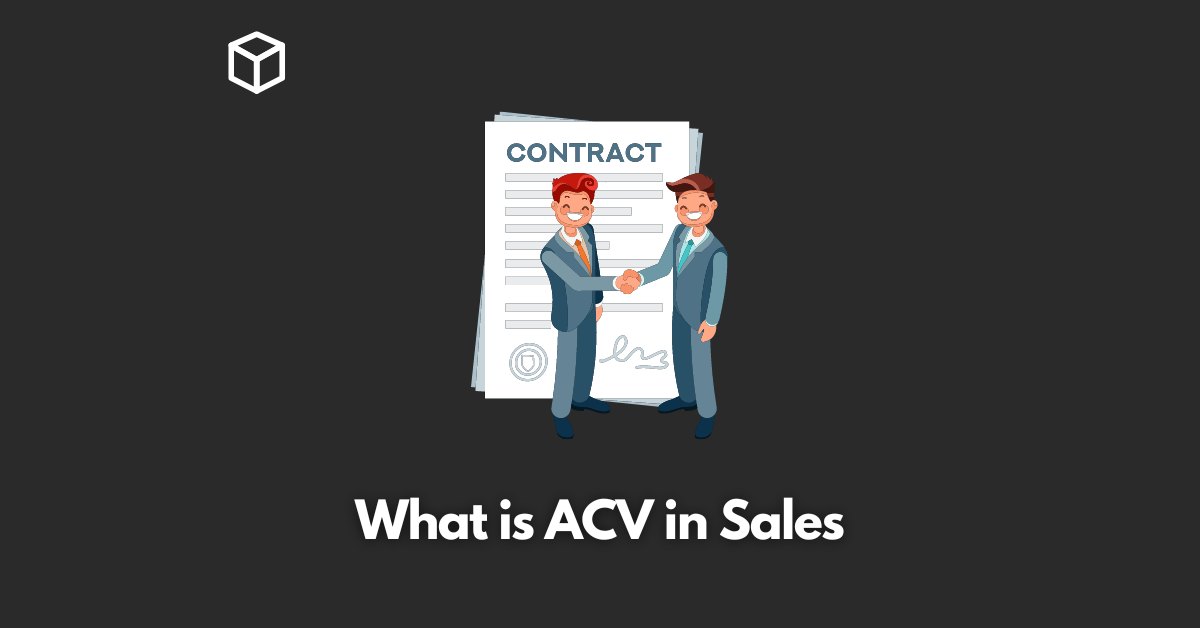ACV, or Annual Contract Value, is a crucial metric for subscription-based businesses to understand and measure.
It represents the total value of a contract over a one-year period, providing insight into the revenue generated by a single customer.
It is particularly relevant for subscription-based businesses, such as software or services, as it helps to determine the revenue generated by a single customer over the course of a year.
In this article, we will explore the definition, calculation, and importance of ACV in sales, as well as strategies for increasing it.
Importance of ACV in subscription-based businesses
ACV is important for subscription-based businesses because it provides a clear picture of the revenue generated by a single customer.
This information is useful for setting sales targets and quotas, tracking and forecasting revenue, and understanding customer value.
Additionally, by measuring ACV, businesses can make informed decisions on pricing strategies and identify opportunities for upselling and cross-selling.
How to calculate ACV
The formula for calculating ACV is: ACV = (Total contract value) / (Number of years in the contract)
For example, if a customer signs a 3-year contract for $2100, the ACV would be $700 ($2100 / 3 years).
If a customer signs a 2-year contract for $1800, the ACV would be $900 ($1800 / 2 years).
Importance of ACV in sales
Understanding customer value
Measuring ACV helps businesses to understand the value of their customers.
This information can be used to identify and target high-value customers, as well as to make informed decisions about pricing strategies.
Setting sales targets and quotas
By understanding the ACV of a customer, businesses can set more accurate sales targets and quotas.
This allows them to focus their efforts on acquiring and retaining customers who will generate the most revenue.
Tracking and forecasting revenue
Measuring ACV also allows businesses to track and forecast revenue more effectively.
By understanding the revenue generated by a single customer, businesses can make more accurate predictions about future revenue and identify potential issues early on.
Strategies for increasing ACV
Upselling and cross-selling
One of the most effective ways to increase ACV is through upselling and cross-selling.
By identifying high-value customers and offering them additional products or services, businesses can increase the revenue generated by a single customer.
Enhancing customer retention
Another strategy for increasing ACV is to focus on enhancing customer retention.
By providing excellent customer service and addressing any issues promptly, businesses can increase the likelihood of customers renewing their contracts.
Developing long-term customer relationships
Finally, businesses can increase ACV by developing long-term customer relationships.
By fostering strong, ongoing relationships with customers, businesses can create trust and loyalty, which can lead to repeat business and increased revenue.
Conclusion
In conclusion, ACV is a crucial metric for subscription-based businesses to understand and measure.
By measuring ACV, businesses can gain insight into the revenue generated by a single customer, set more accurate sales targets and quotas, and make informed decisions about pricing strategies.
Lastly, by focusing on upselling, cross-selling, customer retention, and developing long-term customer relationships, businesses can increase their ACV.




